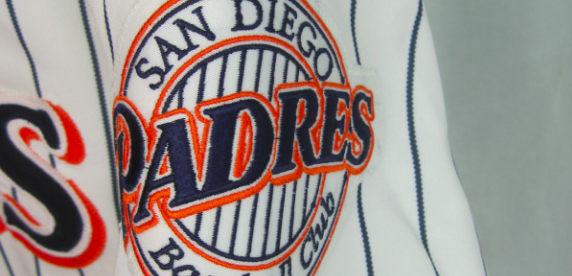When a Baseball Team Traded for Runs

Major League Baseball got underway over the last few days, with all 30 teams playing their first (fake) games of the year. Spring Training — when teams play games that don’t count in small stadiums throughout Arizona and Florida — is underway. It’s a chance for Major League veterans to get back into the groove while prospects and more marginal guys get a chance to prove that they’re worth a roster spot.
Either way, expect players to hit the gym as often as they take the field. As these guys are playing for professional sports teams, they’re probably used to having state-of-the-art practice and workout facilities. But that hasn’t always been the case. Just take the odd situation that the 1997 San Diego Padres found themselves in.
In 1996, the Padres had one of the best seasons in their franchise’s history. They won 91 games (to 71 losses), earning first place in their division. Their third baseman, Ken Caminiti, won the league’s Most Valuable Player award. Future Hall of Famers Tony Gwynn and Rickey Henderson joined Caminiti in the lineup, and another future Hall of Famer, closer Trevor Hoffmann, anchored the bullpen. Despite the fact that the St. Louis Cardinals knocked the Padres out of the playoffs in three straight games, the future looked bright in San Diego. But there was a problem — all of those really great players cost a lot of money. And the Padres didn’t have a lot left to spend.
During the 1996-1997 off-season, Padres General Manager Kevin Towers was stuck — no money left in his budget and his team needed supplies. The Padres shared their stadium — their regular season one, not the Spring Training facility — with the local football team, the San Diego Chargers. (The Chargers have since moved to Los Angeles.) As Towers explained to the San Diego Tribune, the team “didn’t have any more dollars to spend and at that time we were sharing the (Qualcomm Stadium) weight room with the Chargers.” And the baseball team “needed to buy some new weights.”
The team turned to a guy named Sean Mulligan. Mulligan was the team’s 4th round draft pick in 1991 and spent most of the 1996 season playing for the Las Vegas Stars, the Padres’ top minor league team. He had enough success in the minors to warrant a chance to play for the big league team — but only barely. On September 1st, he was called in to pinch hit but was immediately taken out of the game when the opposing team announced a new pitcher (a move which isn’t as unusual as it sounds). Five days later, he was brought in to pinch hit again, and this time, actually got to swing the bat — but he grounded out. And that was it for his career with the Padres.
By the time January of 1997 came around, Towers and the Padres were willing to move on from Mulligan. There isn’t much of a market for a never-was prospect, though and Towers, not expecting to get much in return anyway, called up a friend. On the other end of the line was Dan O’Dowd, then the general manager of the Cleveland Indians, and told him about the weight room predicament. O’Dowd offered up a solution — he’d trade for Mulligan, but instead of sending back another player, the Indians would send $75,000 cash. Oh, and a used Woodway-brand treadmill.
Towers agreed and used the money to buy “pumpable iron” (i.e. weights) for his players. Mulligan forevermore, became the guy traded for a treadmill. And it wasn’t a very good treadmill at that — Towers subsequently told the Tribune that it “broke down in about a month. It would stop and you’d go into the wall.” The Padres’ season followed a similar pattern; the team lost more than half their games and failed to defend their division title. And the guy traded for the treadmill? He never made it back to the Majors.
Bonus fact: The word “treadmill” comes from the device’s original purpose — using the power from a walking human (or animal) to grind grain. If that sounds like torture, you’re not alone in thinking that. In the 1800s, a British engineer named Sir William Cubitt had the same thought, so he proposed mandating that prison inmates use treadmills, both as punishment and as a way to make them productive. Many prisons signed onto the plan and, for the rest of the century, some British prisoners were forced into walking-in-place action. The practice was abolished by an act of Parliament in 1902.
From the Archives: The Padre for Life: A really nice story courtesy of the San Diego Padres.
